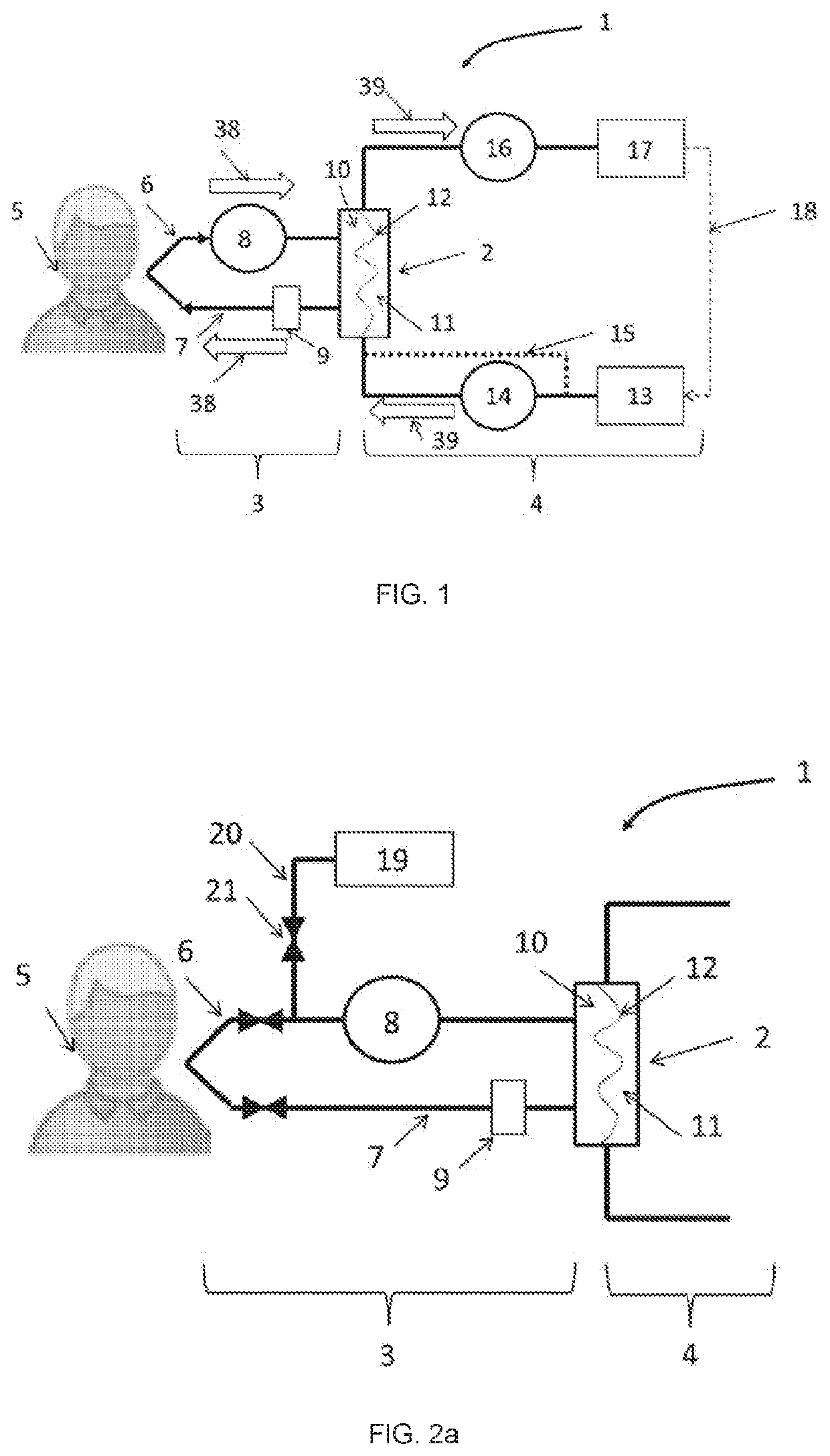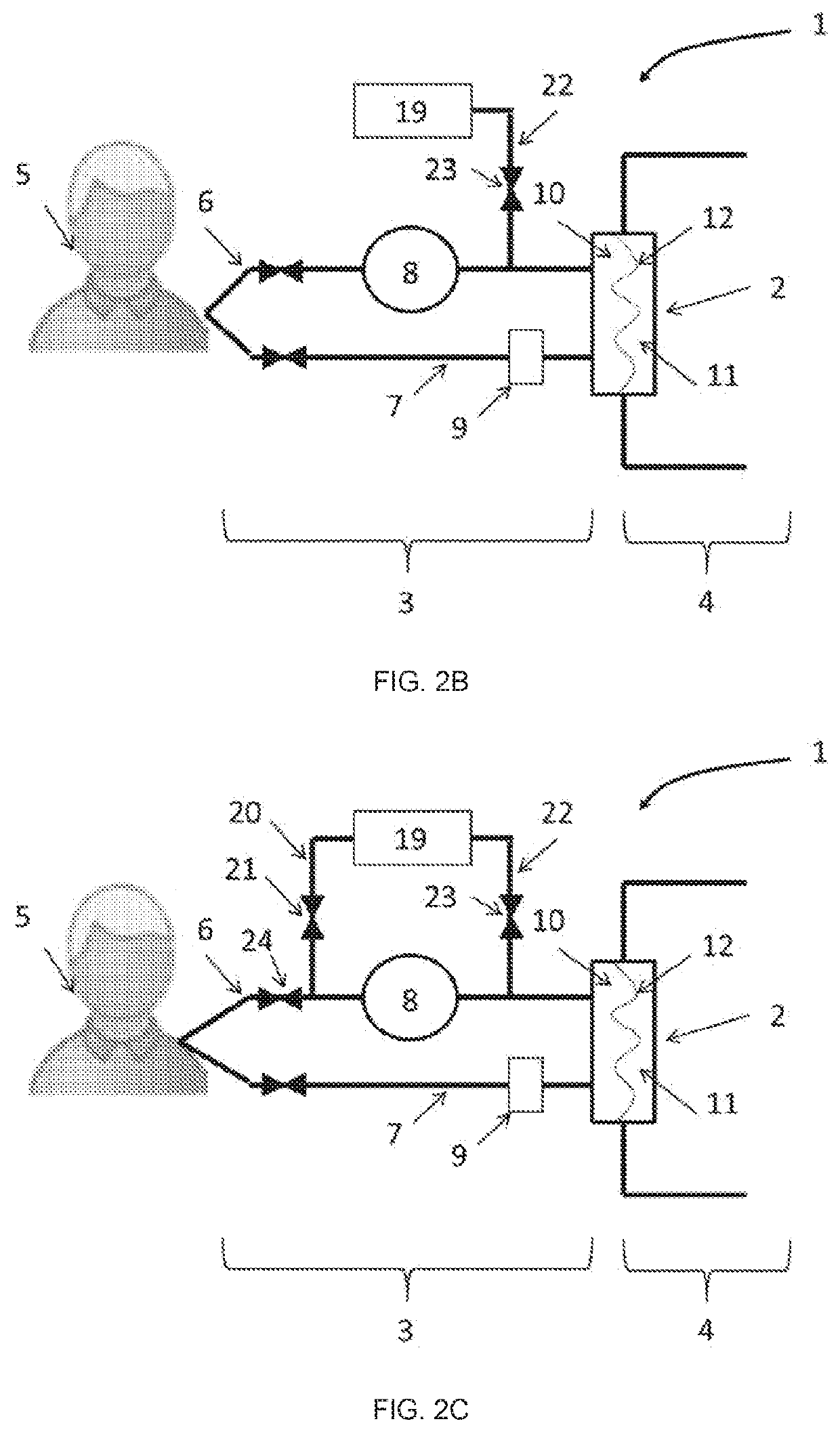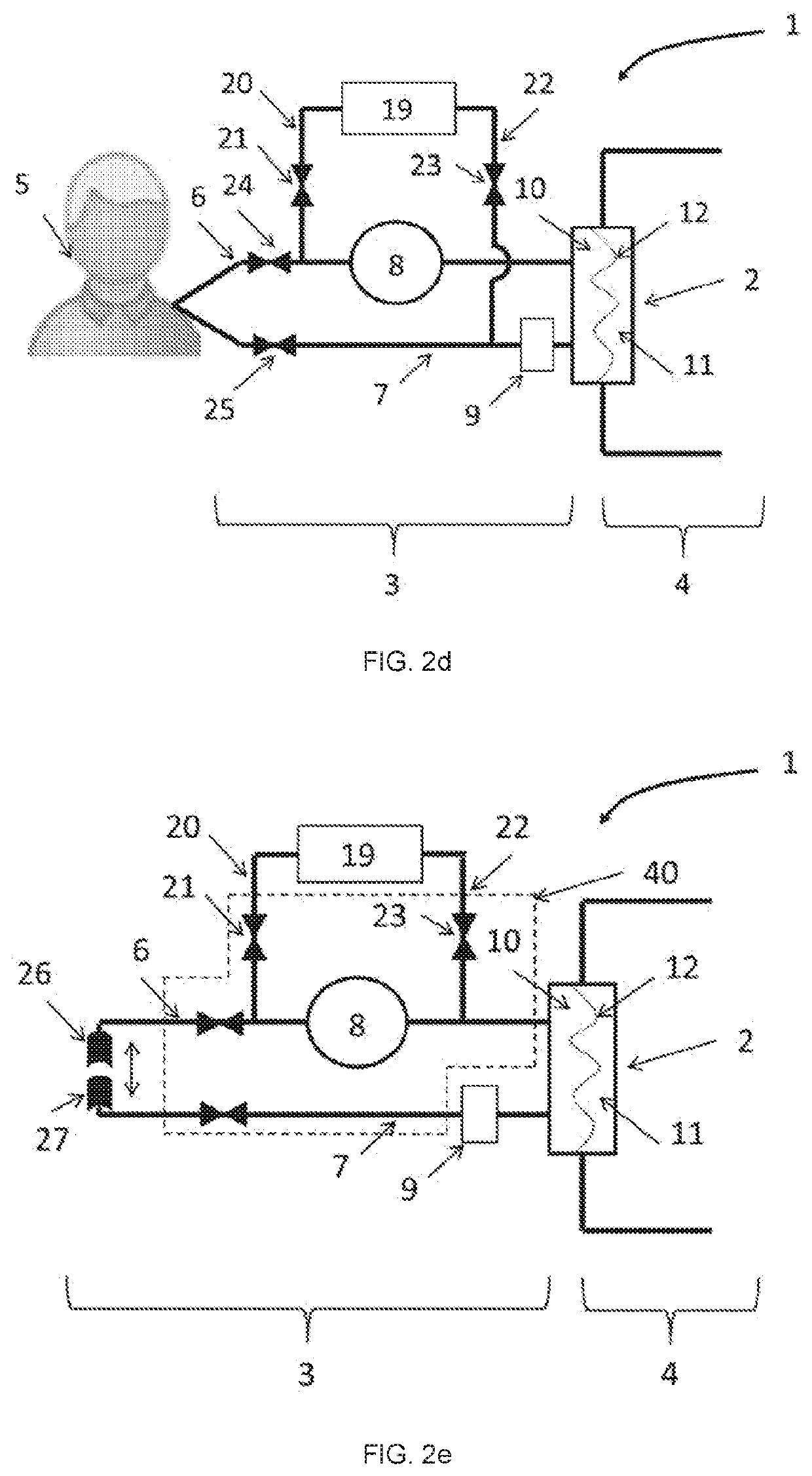Automated Extracorporeal Blood Treatment Apparatus
a treatment apparatus and extracorporeal technology, applied in the direction of suction devices, medical devices, other medical devices, etc., can solve the problems of air/blood interface, dialyzer manipulation, and higher risks of contamination of inside sterile content, so as to facilitate the treatment process, reduce labor and supply costs, and ensure home treatment.
- Summary
- Abstract
- Description
- Claims
- Application Information
AI Technical Summary
Benefits of technology
Problems solved by technology
Method used
Image
Examples
embodiment 700
[0388]The FIG. 37 shows another potential embodiment 700 having an apparatus 701, a display device 710, a door 704 allowing accessing to the cassette holder(s) and a heating compartment 705. In this embodiment, the loading system may move up and down the cassette holder with the door.
[0389]The FIG. 39 shows the system 700 in functional condition. The system further comprises a sorbent device 712, the tubes 713 of the fluid circuit and the weighing bag 714.
[0390]Loading System
[0391]Two distinct loading systems may be used for the apparatus (for example shown by the FIGS. 13 to 17). For both systems, the loading system 400 comprises at least one of a drive mechanism and a cassette holder 401 intended to removably receive a cassette. The cassette holder 401 is arranged into the housing of the apparatus. The aim of the loading system may be to enable the coupling between dedicated active elements 404 (also called components), 403, 402 of the apparatus and the cassette 106. Preferentiall...
first embodiment
[0407] the drive mechanism is adapted to move the cassette holder (also called movable holder of cassette) relatively to the apparatus (for example to at least one of the housing, to the opening, and the fixed support of components). The support 406 of the dedicated active elements 406 (also called fixed support of components) may be firmly secured into the apparatus and are not moved by the drive mechanism.
second embodiment
[0408] the drive mechanism is adapted to move one or more dedicated active elements (for example the support (also called movable support of components)) relatively to apparatus (for example to at least one of the housing, to the opening and the fixed holder of the cassette). The cassette holder (also called fixed holder of the cassette) may be firmly secured into the apparatus and are not moved by the drive mechanism.
[0409]According to another embodiment, the drive mechanism is adapted to move one or more dedicated active elements and the cassette holder relatively to apparatus. Thus, the drive mechanism is used to bring the dedicated active elements and the cassette holder closer or to move away.
[0410]In all cases, preferentially, the opening(s) of the housing does (do) not move with the drive mechanism. In other terms, the opening(s) of the housing may be fixed and / or may have a fixed perimeter. Thus, according to the first embodiment described above, the openings of the cassette...
PUM
 Login to View More
Login to View More Abstract
Description
Claims
Application Information
 Login to View More
Login to View More - R&D
- Intellectual Property
- Life Sciences
- Materials
- Tech Scout
- Unparalleled Data Quality
- Higher Quality Content
- 60% Fewer Hallucinations
Browse by: Latest US Patents, China's latest patents, Technical Efficacy Thesaurus, Application Domain, Technology Topic, Popular Technical Reports.
© 2025 PatSnap. All rights reserved.Legal|Privacy policy|Modern Slavery Act Transparency Statement|Sitemap|About US| Contact US: help@patsnap.com



